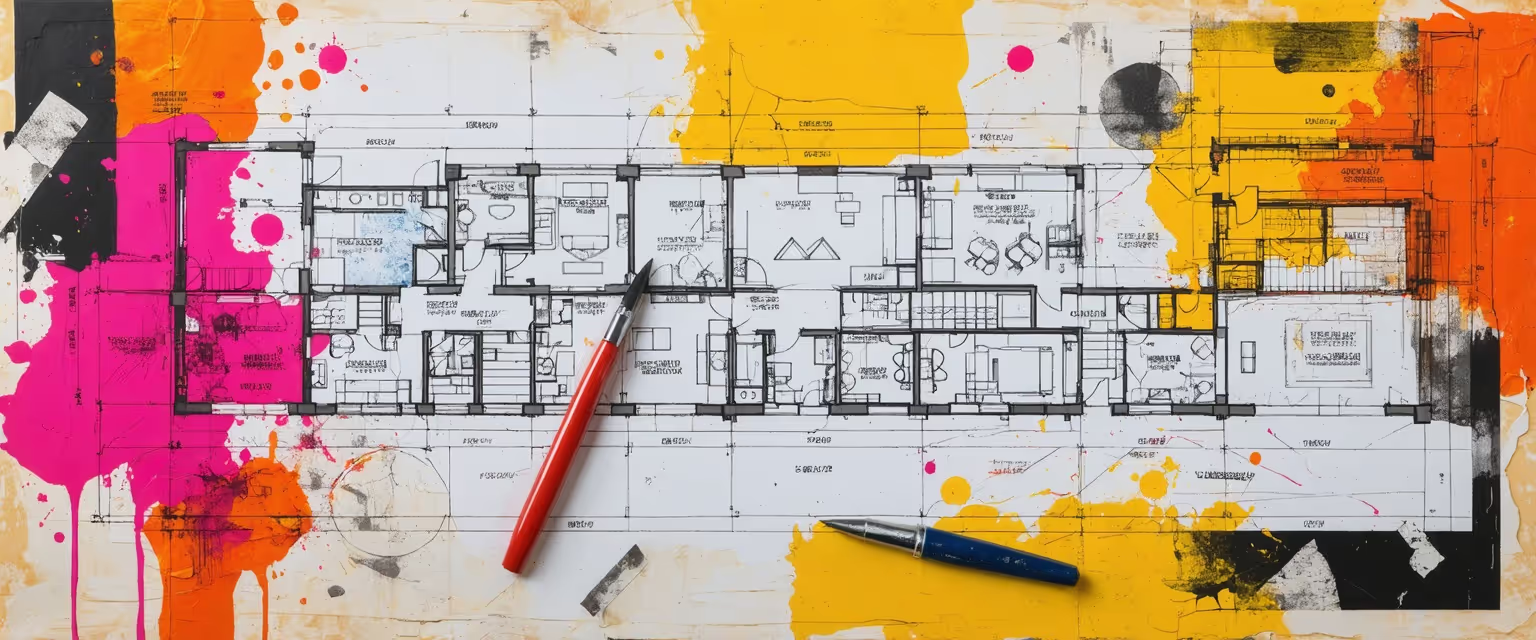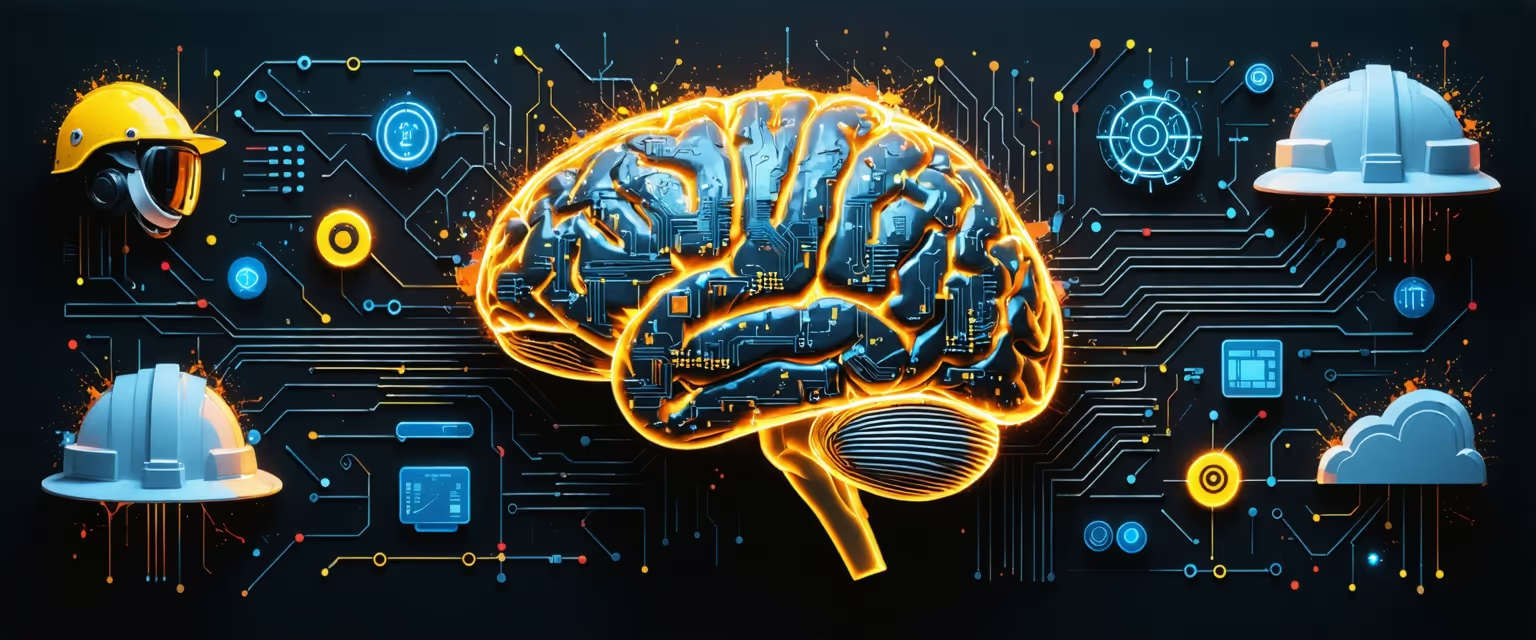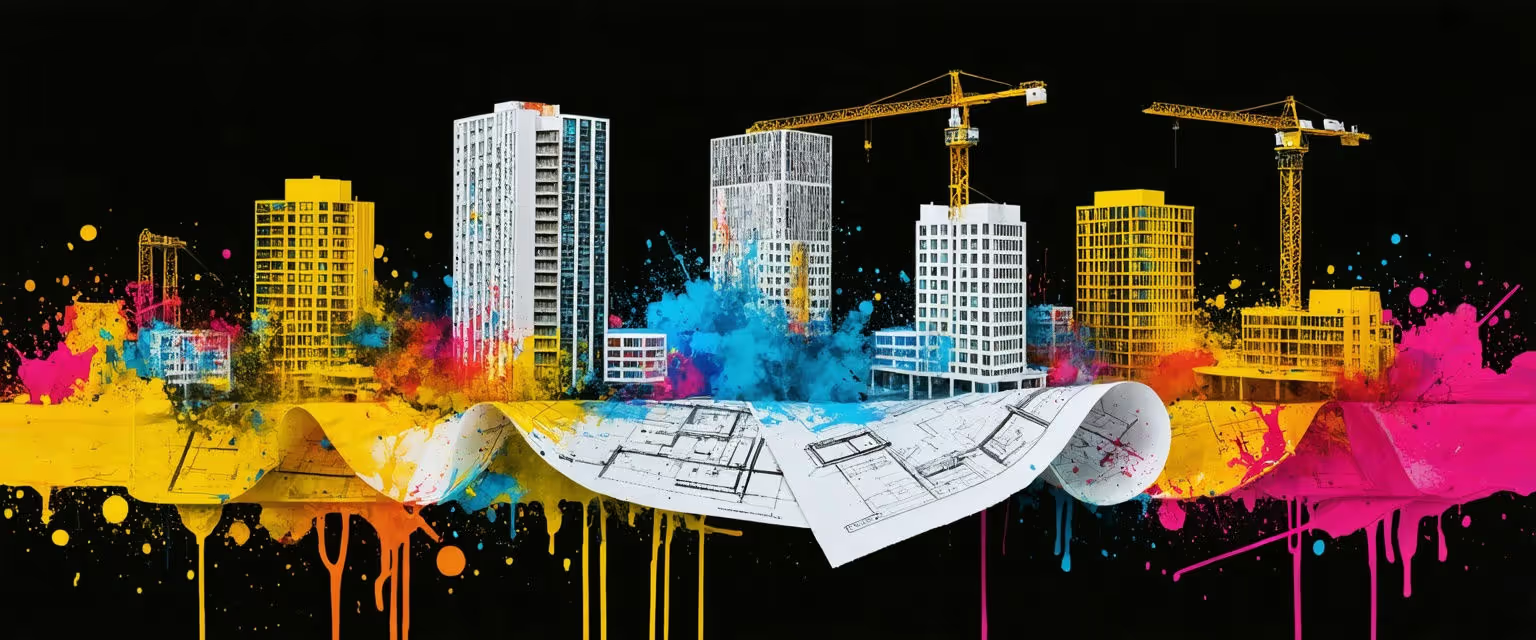All Posts
Construction - AI-Powered Construction Safety & Compliance
How AI Revolutionizes Real-Time Safety Alerts in Construction

Explore how AI is transforming construction safety with real-time alerts, predictive analytics, and IoT integration. Enhance site safety and efficiency.
Accidents on construction sites remain alarmingly frequent, resulting in significant financial losses and, more tragically, the loss of lives. The core challenge lies in the unpredictable hazards that emerge in these dynamic environments. How AI automates real-time safety alerts in construction is transforming the industry by harnessing Agentic AI to unify project data, enabling real-time hazard prediction and prevention.
Datagrid’s data connectors offer a targeted solution for this. By addressing this critical problem head-on, companies can proactively enhance safety measures and keep workers safer. Let's explore how Datagrid's advanced AI solutions reduce risks, streamline operations, and forge a safer path in modern construction.
Current State of Safety Standards in Construction
Even with the ongoing emphasis on safety, injuries remain stubbornly frequent and costly in the construction industry. The demanding nature of the work and the complexity of job sites put workers at significant risk.
Overview of Safety Standards and OSHA Regulations
OSHA, the Occupational Safety and Health Administration, enforces a broad set of rules aimed at preventing injuries—from falls to electrical hazards. While these regulations are designed to keep everyone safe, maintaining consistent compliance isn't always straightforward when each project brings its own unique risks.
High Incidence of Accidents and Costs
Construction remains a high-risk industry for work-related injuries. Falls are a major cause of fatalities, and the industry faces significant safety challenges. Beyond the human impact, accidents bring medical bills, lawsuits, and productivity losses that eat into profits.
Complexity of Ensuring Compliance
Staying compliant isn't easy. Conditions shift by the hour, different contractors step on and off the site, and each team might interpret safety standards in its own way. Project managers juggle training, inspections, and regulatory paperwork—all while managing tight schedules. Utilizing AI to streamline compliance monitoring can help alleviate this burden. Companies embracing AI-driven real-time safety alerts in construction are maintaining compliance and proactively tackling on-site dangers.
Shift from Reactive to Proactive Safety Measures
Traditionally, construction safety focused on following rules, wearing protective gear, and responding to incidents after they occurred. With AI in the mix, there's a fresh approach: identifying risks before they become problems. This shift is powered by enhanced automation capabilities that allow for proactive safety management.
AI's Capabilities in Predicting Hazards
IoT sensors scattered around a site capture environmental readings like temperature or structural integrity, feeding the data into AI systems that spot trouble early. Wearable devices such as smart helmets track workers' movements and vitals, and when connected to AI, they highlight emerging concerns quickly. Intelligent document processing tools analyze reports and inspections, identifying patterns or anomalies that could indicate potential issues. Instead of waiting for accidents, project leaders get a heads-up on where and how something might go wrong.
Data Analysis for Enhanced Safety Protocols
Collecting data is just the first step. Machine learning algorithms digest patterns, correlate them with known risk factors, and often generate action steps automatically. If dust levels spike too high, for instance, ventilation systems can kick into gear before workers notice the problem. This proactive management shifts us from fixing issues after the fact to spotting them in near real-time, upgrading overall site safety.
AI Technologies and Applications
Overview of IoT Devices and Drones
IoT devices and drones are transforming workplace safety. IoT sensors track machine conditions, environmental factors, and even worker fatigue, then feed everything back to AI systems that predict when equipment might fail or when a site condition becomes dangerous. Meanwhile, drones offer a big-picture view, capturing images no matter how remote or elevated the location. This vantage point reduces the need for risky manual inspections.
Wearable Sensors and AR
Wearables like smart helmets and watches keep tabs on workers' health and alert them to potential hazards. These devices measure noise exposure, sudden impacts, or even heat stress, giving crews a chance to fix a situation before it escalates..
Augmented Reality (AR) builds on that foundation, overlaying vital safety data onto a worker's field of vision. This helps crews train for high-stakes tasks and avoid unexpected pitfalls. It's about layering helpful information directly onto the work environment.
Integration with AI for Automated Real-Time Safety Alerts in Construction
Things really get interesting when AI, employing advanced AI agent architectures, ties these technologies together. Data flows in from sensors, drones, and wearables, and AI spots anomalies before a human might even notice. Integrating these systems helps automate workflows, ensuring timely responses to potential hazards.
When something goes wrong—or looks like it might—an automated real-time safety alert goes out, warning the right people instantly.. This streamlines safety management and removes guesswork, so supervisors can respond faster.
Enhanced Monitoring and Accident Prevention
Real-Time Alerts and Predictive Analytics
AI tools process both historical and live data to forecast possible incidents, including data mining from PDF documents. These AI tools not only improve safety but also help in enhancing speed and accuracy of data analysis and decision-making processes. When issues are flagged, managers get alerts on tablets or smartphones, enabling immediate corrective action.
Impact on Project Efficiency
Accidents stall progress, ramp up costs, and disrupt schedules. By anticipating risks, AI-driven systems keep projects on track. Fewer injuries mean fewer shutdowns. Predictive insights further sharpen resource allocation so teams aren't stuck waiting around for equipment to be fixed or replaced. The result is a safer environment and a more efficient project timeline—a win-win.
Facilitating AI-Driven Safety Solutions
Importance of Data Integration
For AI to succeed at scale, data from sensors, drones, and cameras must mesh together seamlessly. A single project might generate thousands of data points per day, each from a different device or platform.
Without a coherent funnel, key insights slip through the cracks. That's where robust data integration comes in, combining environmental conditions, worker qualifications, and equipment metrics into one clear view. Effective integration with data sources ensures that key insights are not missed..
Real-Time Analytics in Decision-Making
With data integrated, it becomes a rich resource for real-time analytics. AI can immediately process changes in on-site conditions—like sudden temperature spikes or unexpected vibration patterns—and suggest immediate solutions. When project managers see critical info updated in minutes, not days, they can act decisively on tight deadlines. This speed fosters a culture of safety that adapts to unpredictable site realities.
Implementing AI for Real-Time Safety Alerts in Construction
Technical and Leadership Skills Required
Project managers benefit from understanding AI systems, predictive maintenance, and automated safety protocols. They also need the communication skills to champion AI-driven safety efforts among workers, contractors, and stakeholders. Setting clear goals, encouraging new habits, and providing targeted training keep everybody on board with the new processes.
Competitive Edge in Safety Management
Investing in AI-based safety increases worker protection and confidence. It trims downtime caused by accidents and can bring down insurance costs. Over time, building a reputation for strong, tech-enabled safety helps companies stand out from competitors vying for bids. Additionally, automating sales proposal creation with AI can speed up the bidding process, giving firms an edge in winning contracts. Clients and investors notice when a project runs smoothly with fewer hazards and delays.
How Agentic AI Simplifies Construction Task Automation
For construction managers juggling complex tasks, Datagrid's data connectors and AI agents free up time that routine paperwork usually demands. This automation, powered by agentic AI, reduces manual labor and knits project data together more cleanly. By syncing directly with platforms like Procore, PlanGrid, or Autodesk BIM 360, Datagrid channels your RFPs, submittals, and daily reports into one unified flow—no phone tag or copy-paste nightmares.
How AI automates real-time safety alerts in construction is part of this innovation. AI agents quickly process incoming documents, comparing specifications to historical data and calling attention to hiccups that warrant a manager's review. The same goes for permit status updates across multiple agencies. This automation reduces manual labor and knits project data together more cleanly.
Automating Core Tasks with AI Agents
- Document Management: Accurate routing and automating document review of submittals, RFIs, and change orders saves hours and avoids missed details. By leveraging AI in managing RFP responses, AI flags any potential conflicts instantly.
- Safety Compliance: By connecting to safety systems, Datagrid checks worker qualifications and equipment certifications in the background, alerting teams to any expired documents or missing credentials.
- Progress Tracking: Daily logs, schedule updates, and photos feed into a progress dashboard that forecasts delays ahead of time.
- Communication: Integrations with Slack or Microsoft Teams enhance collaboration and productivity by pushing the right updates to the right people. No more missed messages about critical changes.
Extending Beyond Construction-Specific Software
Datagrid also pairs with Microsoft Project, Primavera P6, Sage 300, and QuickBooks to gather schedule and financial data under one roof. Managers see real-time budget forecasts and resource allocations without having to juggle multiple tabs. This comprehensive perspective means key decisions happen fast, relying on current data instead of guesswork.
Simplify Real-Time Safety Alerts in Construction with Agentic AI
Datagrid revolutionizes construction project management by seamlessly integrating with platforms to unify workflows and data. Its AI-driven tools automate RFP analysis, bid management, submittals, and change orders, significantly reducing manual effort and errors.
With real-time project insights and schedule optimization, Datagrid empowers teams to make faster, smarter decisions, saving time, cutting costs, and streamlining administrative tasks for more efficient project delivery. Discover what Datagrid can do.












